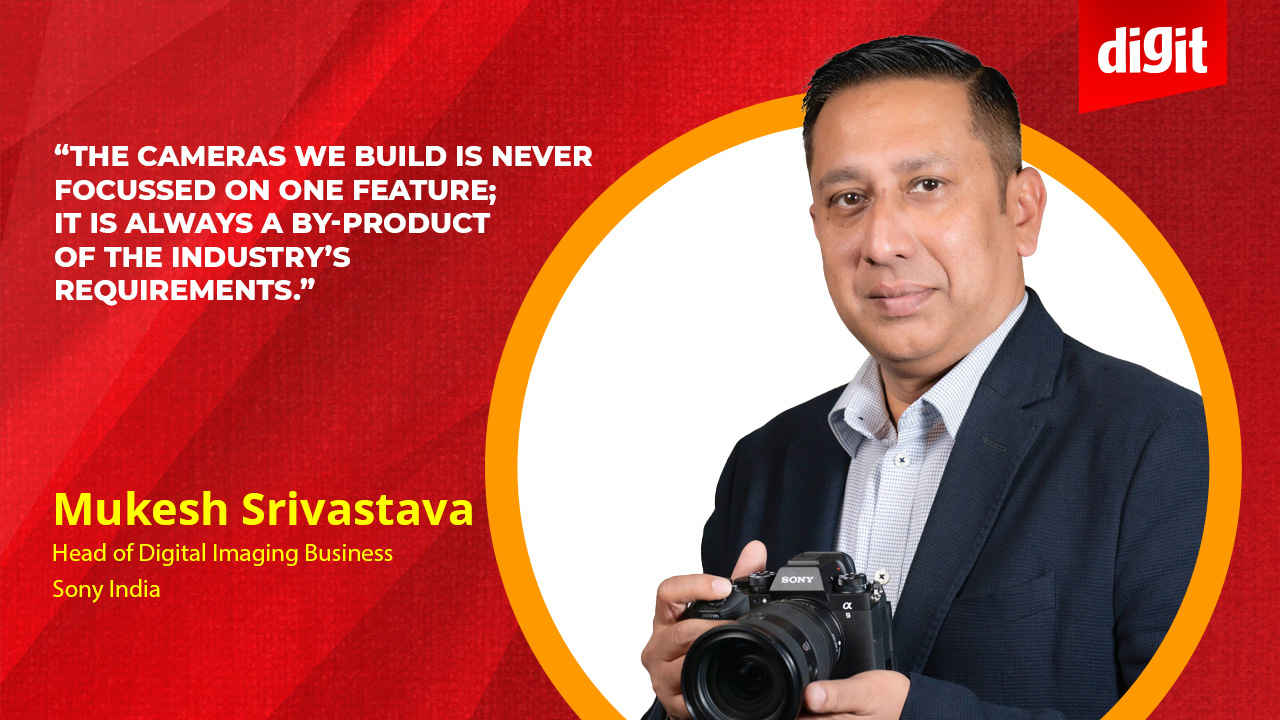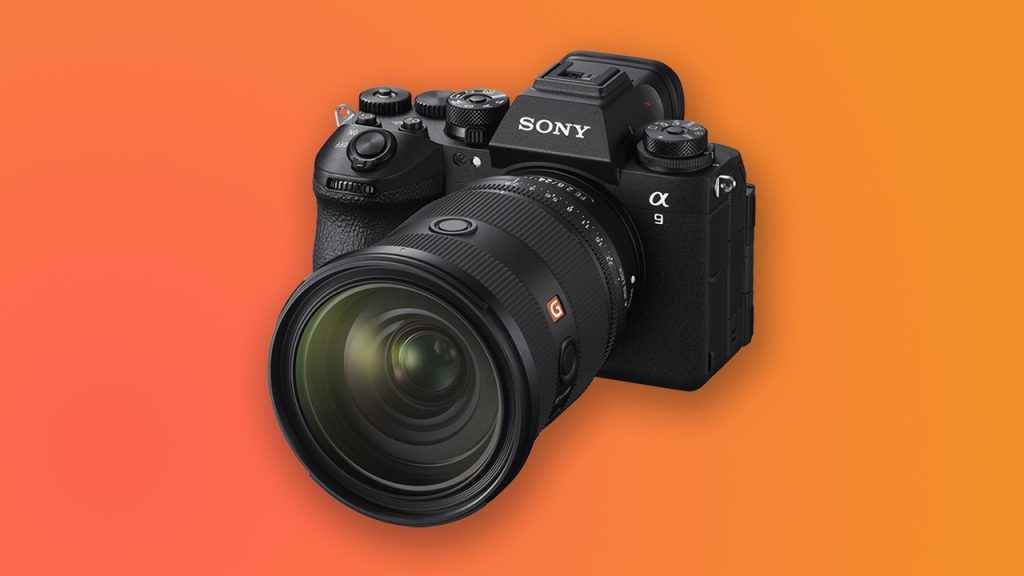Industry Connect: Sony bets big on Global Shutter tech for mirrorless consumer cameras

In the wake of Sony’s Alpha 9 III launch, we sat down with Mukesh Srivastava, Head of Digital Imaging Business, Sony India to get his insights about Sony’s growth story in India and about what makes the Sony a9 III stand out among its peers.
Digit – So the headline feature for the Sony A9 III is the global shutter. What prompted Sony to adopt this tech and bring it to this segment?
Sony – The launch of Alpha 9III marks the beginning of a new era in professional photography with it being a game changer with just the central upgrade of global shutter image sensor, which makes it the fastest camera in the entire Alpha range. The camera is designed to allow its customers to take advantage of the unmatched shooting speed. Featuring the world’s first full-frame Global Shutter, this camera has shutter speed of 1/80000 second, 120fps with RAW, blackout free images and flash sync at any possible speed.
Shutter speed is free from the limitations of conventional mechanical shutter image sensors and achieves a maximum shutter speed of 1/80000 second (1/16000 second during continuous shooting), making it possible to capture at high speed without any distortion. The newly installed Pre-Capture function allows the customer to go back up to 1 second and record the moment before pressing the shutter, a Continuous Shooting Speed Boost change during shooting, and enhanced burst stamina ensures that important moments are reliably captured due to a large buffer memory and increased overall system speed allow up to approximately 390 Fine JPEG images to be captured in one continuous 30 fps burst.
The global shutter image sensor provides distortion-free image expression for videos as well as still images. For example, the customer can shoot images of nearby scenery from a fast-moving vehicle such as a car or fast-moving subjects with ease. This camera is the first in the Alpha series to be able to record 4K 120p high-frame-rate video without cropping, allowing the customer to shoot at the intended angle of view. It is also possible to shoot high-resolution 4K 60p videos with 6K oversampling.
With Alpha 9 III, Sony has taken cognizance of feedback from professional photographers and therefore created operability and reliability that supports professional image makers.
Digit – Will the global shutter tech trickle down to the APS-C line as well in the future? If yes, what would the timeline for that be?
Sony – At Sony, we have always been at the forefront of technological innovation, aiming to provide creators with tools that empower their creativity and enable them to tell stories in the most compelling way possible. The introduction of global shutter is a testament to our vision of addressing the needs of professionals. We are unable to comment on future technologies in future products.

Digit – With the A9 III, Sony claims to have improved on their already well-renowned Auto Focus system. What does research and development look like for a system like this? As in, how does a manufacturer like Sony extract even more performance from their hardware when it is already on the top?
Sony – Sony cameras are evolving with new technologies like AI and global shutter, reflecting our commitment to meeting customer demands across various photography genres. The new Alpha 9 III is equipped with high-density focal plane phase detection AF. A designated AI processing unit uses Real-time Recognition AF (autofocus) to recognise a wide variety of subjects like human, animal, bird, insect, car/train and airplane. By combining high-speed performance of up to 120fps with RAW and a highly accurate subject recognition performance, it is possible to easily photograph decisive scenes and moments that cannot be captured with the naked eye. The AI processing unit in the Alpha 9 III supports movies as well as stills with accurate subject form and movement recognition. It provides a significant improvement in human eye recognition performance with Real-time Recognition AF and Real-time Tracking automatically recognising, tracking and focusing on the eyes of a specified subject.
Today, we see YouTubers, filmmakers, photographers, videographers upgrading their workflow and moving towards cameras that are compact, lightweight, and flexible. To create a camera with advanced sensor, optics, software, hardware and to put all this in a single body is challenging. However, at Sony our engineers and R&D team builds such powerful cameras with the latest technology that delivers unprecedented results just as the creator demands. The cameras we build is never focussed on one feature; it is always a by-product of the industry’s requirement.
Digit – Where does the A9III fall in relation to the Alpha 1, and who are both of them catered towards, considering the Indian market?
Sony – Our customers have high expectation on technology and innovation front, and we are committed to create digital imaging products that are trendsetting, unique and never cease to surprise them. Talking of the comparison between Alpha 1 and Alpha 9III, the main difference lies in the technology. The Alpha 1 has a rolling shutter, while the A9III is the first Sony camera with a global shutter. Alpha 1 is our top camera for both photographers and videographers. On the other hand, the A9III is our most advanced camera, with a global shutter for distortion-free images. While the Alpha 1 is targeted towards hybrid users who wants the best of both worlds, Alpha 9III is targeted towards professionals who wants to capture high-speed action. By combining high-speed performance of up to 120fps RAW with highly accurate subject recognition performance, it is possible to easily photograph significant scenes and moments with the Alpha 9III that cannot be captured with the naked eye. The camera proves to be a game-changer in the situation where decisive moments are ample such as wildlife and sports. In cases such as when the bird is about to take a flight or any important moment is about to take place, the latest feature called pre-capture comes handy, where professionals capture the moments ‘before they happen’.
Digit – From the other major mirrorless camera manufacturers selling in India, who does Sony think is their closest competitor?
Sony – Every day, we are witnessing remarkable advancements in the digital imaging industry, and we believe it is essential for us to innovative and evolve continuously to remain ahead of the curve. With a keen understanding of evolving trends and customer demands, we’re dedicated to delivering efficient solutions in the digital imaging space. From versatile point-and-shoot cameras to professional-grade photography and videography equipment, as well as high-end cinema cameras, our range caters to a diverse array of needs. Speaking of competitors, the Sony Alpha 1 stands out as the closest competition to the Alpha 9III, reflecting our commitment to pushing boundaries and setting new standards in the industry.




